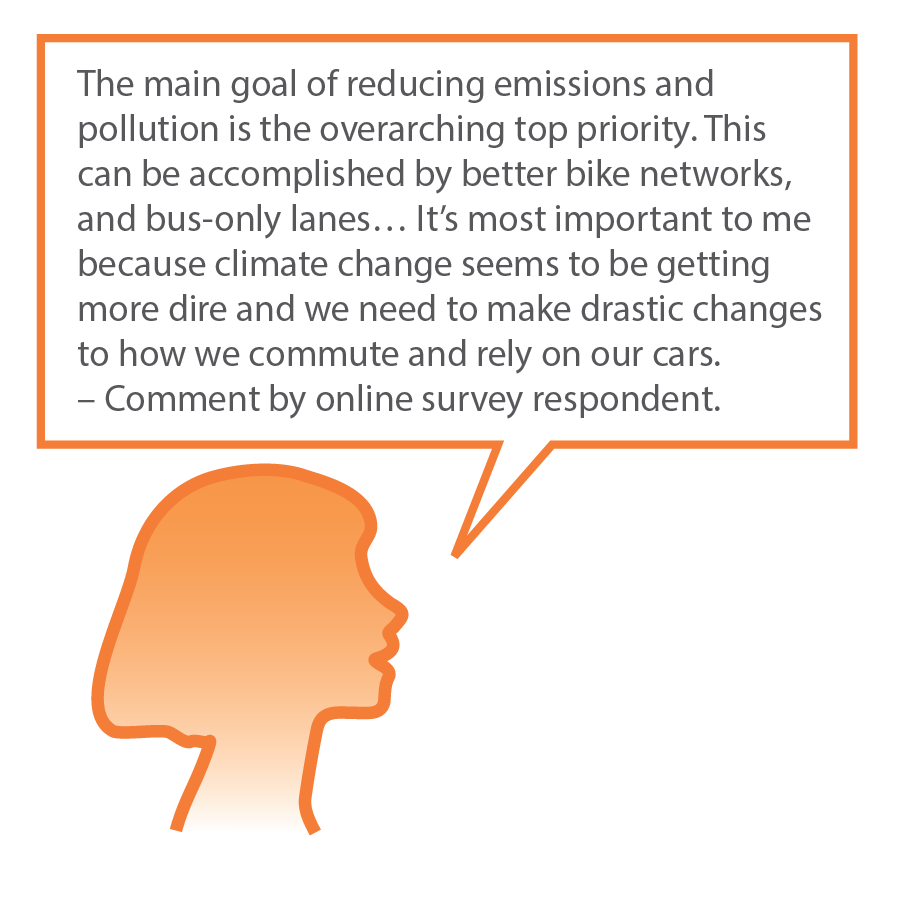This is Part 4 of a series about Destination 2040, the Boston Region Metropolitan Planning Organization’s (MPO) new Long-Range Transportation Plan (LRTP). Destination 2040 establishes a vision for the region’s transportation system and funds both capital investments and research studies to support that vision. Parts 1, 2, and 3 of this series presented different stages of the new plan’s development, prior to its endorsement in August 2019. This installment explores how the new plan is being put into action.
Destination 2040 includes new investment programs for transit modernization, dedicated bus lane infrastructure, and climate resiliency. These programs are intended to help municipalities and agencies design the kinds of transportation projects the MPO wants to fund in its rolling five-year capital plan—the Transportation Improvement Program (TIP).
To better reflect these new programs and ensure it is funding projects that will meet its goals for the region, the MPO is reimagining the criteria it uses to evaluate TIP projects. The new criteria will be developed throughout 2020 and used for the first time in federal fiscal year (FFY) 2021 to score projects eligible for funding in the FFYs 2022–26 TIP. The 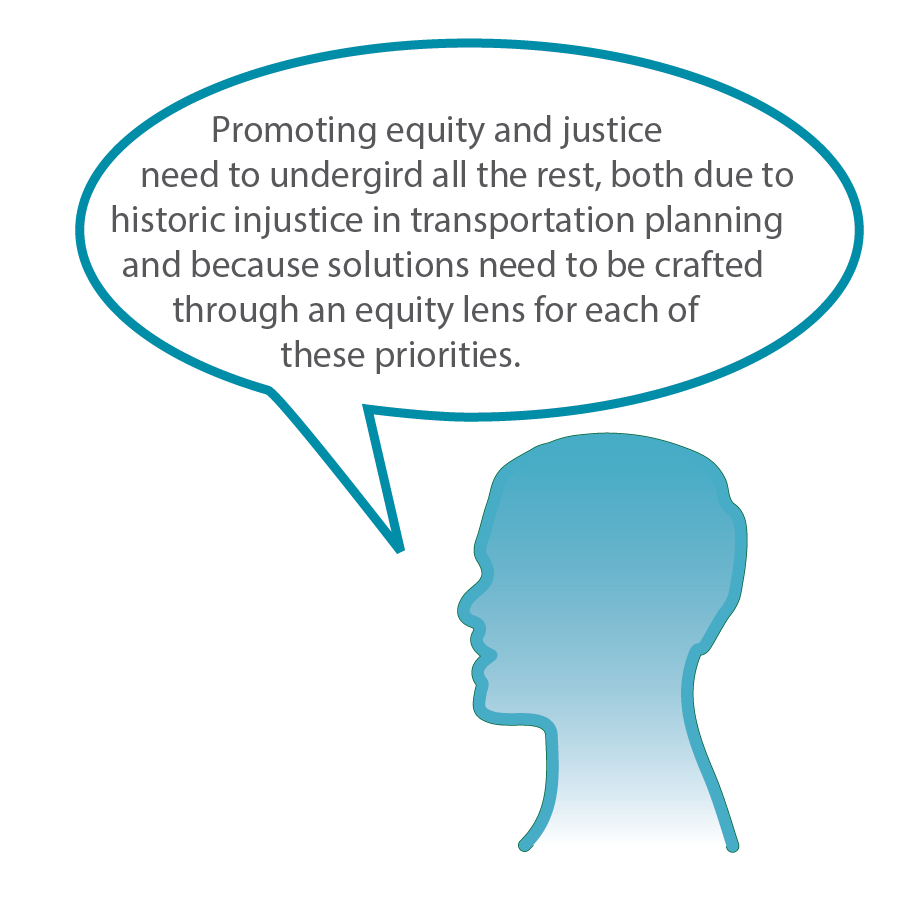 criteria are categorized to correspond to the goal areas in Destination 2040: safety, system preservation and modernization, capacity management and mobility, transportation equity, clean air and sustainable communities, and economic vitality.
criteria are categorized to correspond to the goal areas in Destination 2040: safety, system preservation and modernization, capacity management and mobility, transportation equity, clean air and sustainable communities, and economic vitality.
When developing the new criteria, the MPO plans to
- create separate criteria for each investment program,
- more heavily weight negative impacts,
- add health metrics,
- expand safety metrics,
- use access to jobs and non-work necessities as economic measures, and
- explore cost-effectiveness measures.
To build on the public input received while developing Destination 2040, MPO staff set out to hear more about residents’ priorities for transportation investments.
What We Heard
To make sure the new criteria reflect the concerns of residents of the Boston region, MPO staff conducted both online and in-person outreach between September and December 2019. Staff released an online survey and hosted seven focus groups with transportation advocacy groups and organizations that primarily serve communities of color, low-income populations, people with disabilities, people with limited English proficiency, young people, and older adults.
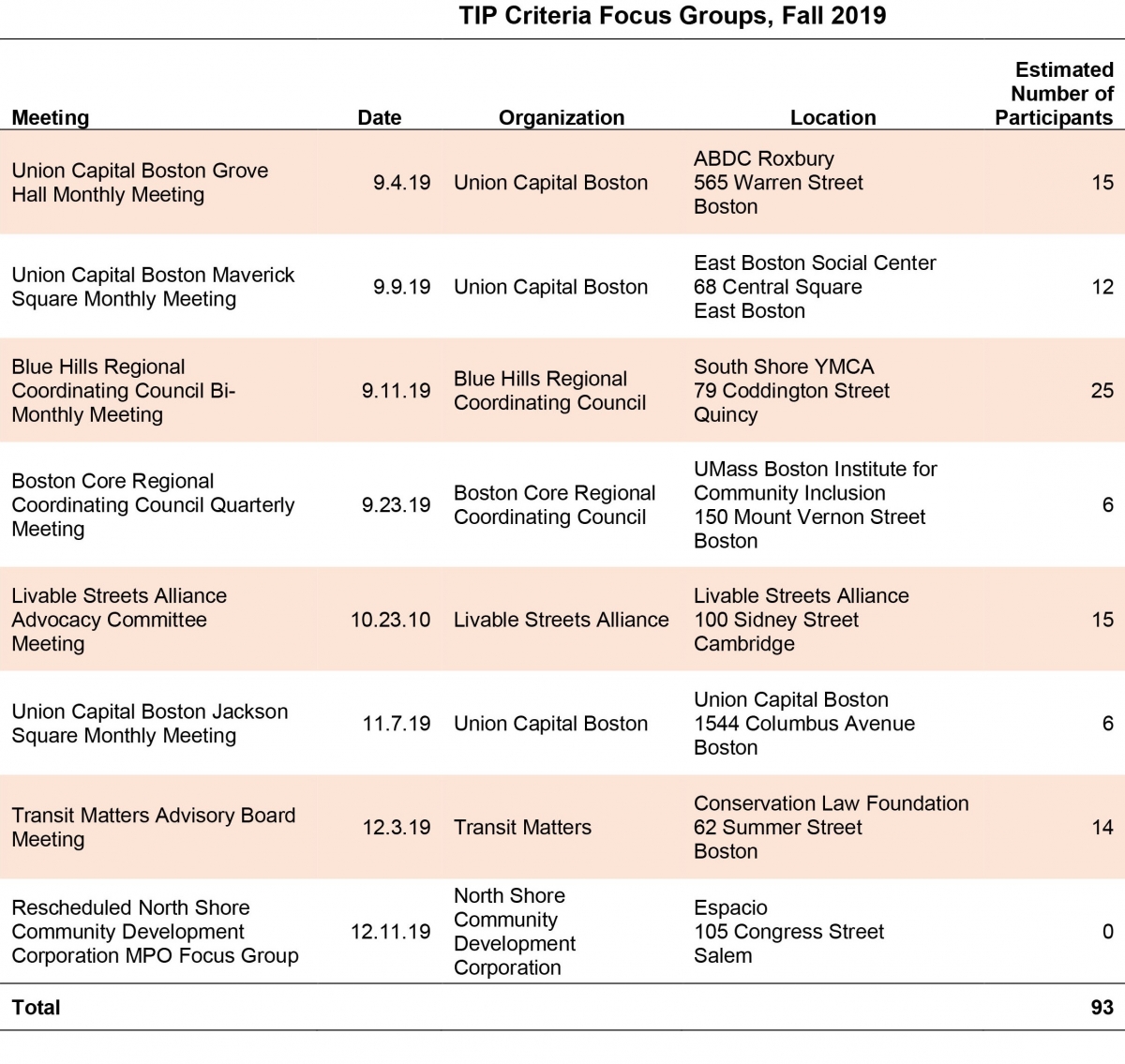
The first question of the survey stated, “Transportation projects are constructed to achieve the following goals. From the options below, please select the five goals that are the most important to you or your community.” The following chart shows the results of the 462 responses.
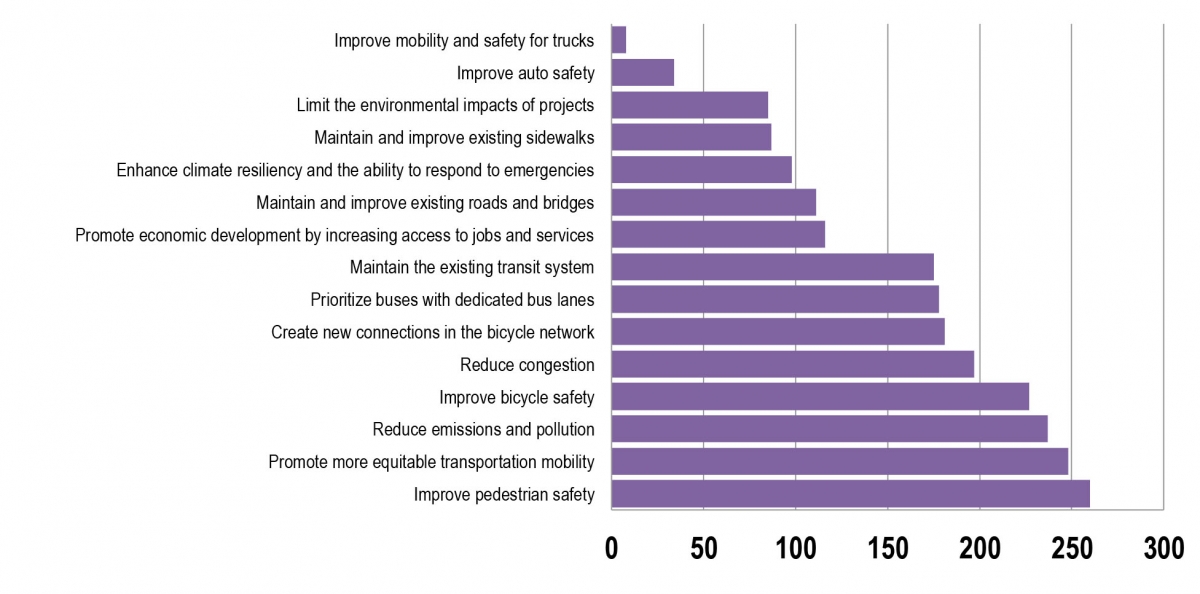
A total of 93 focus group participants were asked to select and rank their top three priorities. The following chart shows these results.
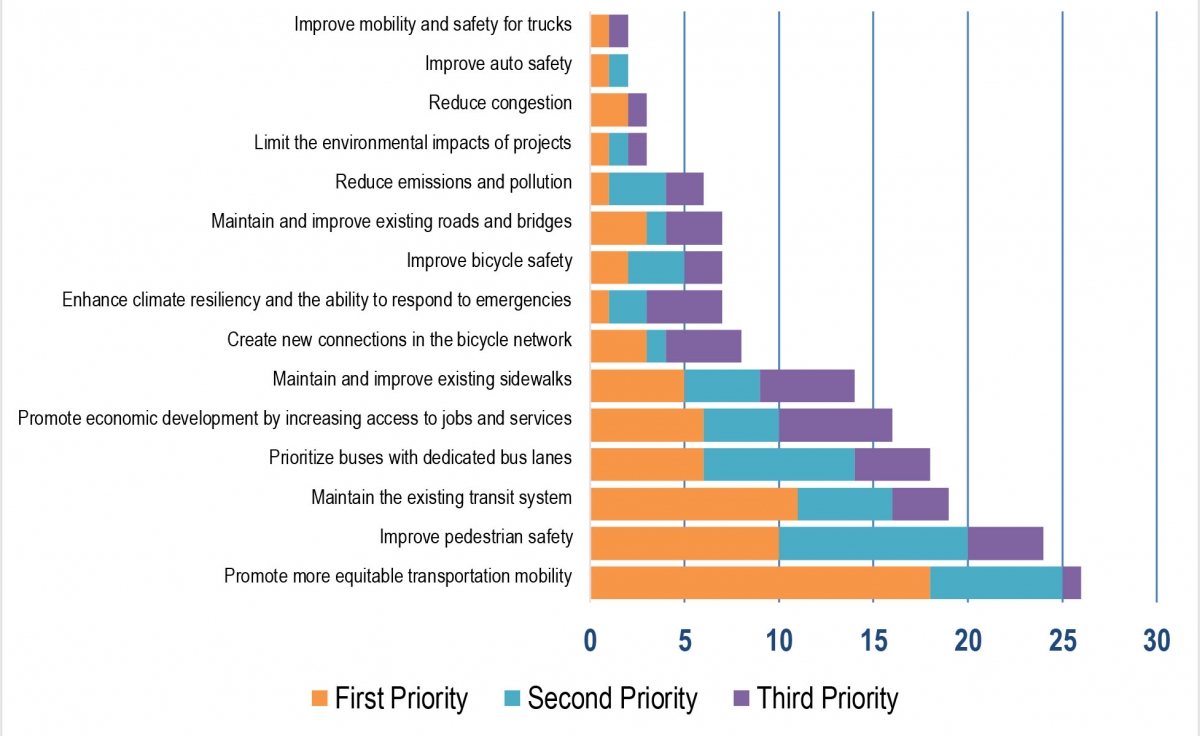
Promoting more equitable transportation mobility and improving pedestrian safety were the two most frequently selected priorities identified from the online survey and focus groups.
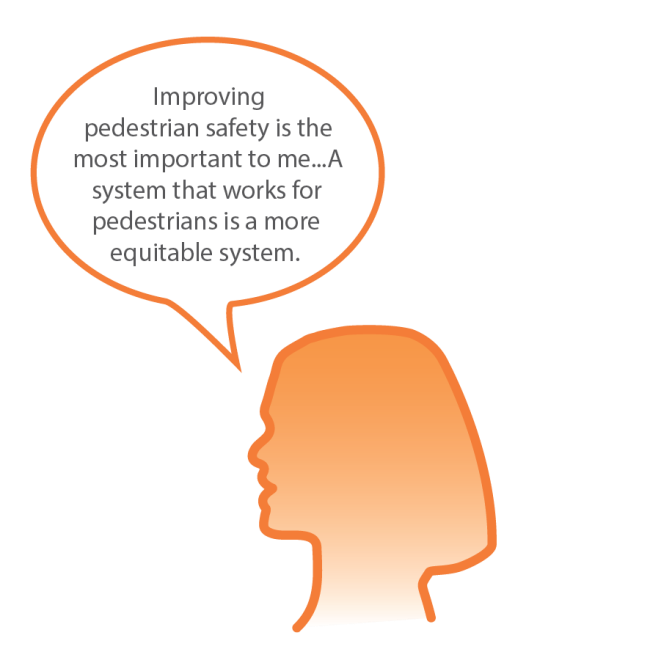
In the online survey, many respondents also gave priority to both reducing emissions and reducing congestion. Respondents recommended achieving these goals by investing in multimodal transportation facilities such as separated bike lanes, dedicated bus lanes, and expanded pedestrian infrastructure, as well as by investing in both the maintenance and expansion of the rapid transit and commuter rail systems.
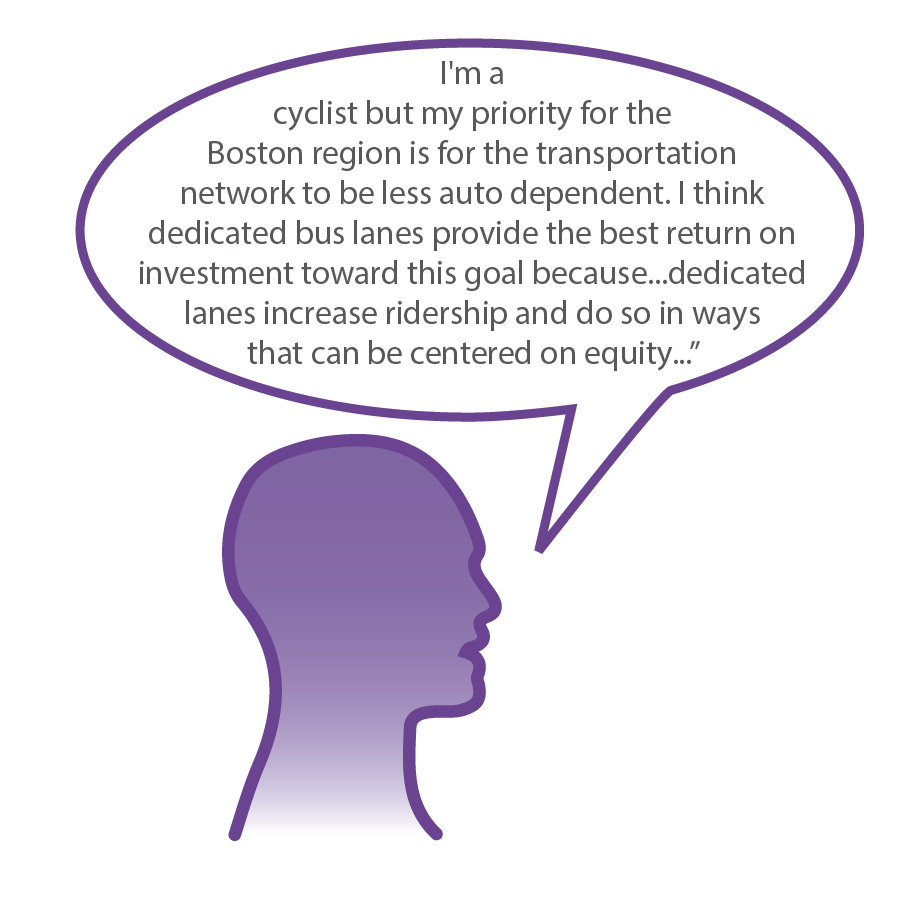
Many respondents emphasized the gravity of climate change and the need to think about climate mitigation and adaptation strategies. Many also supported the idea of encouraging mode shift to reduce pollution.
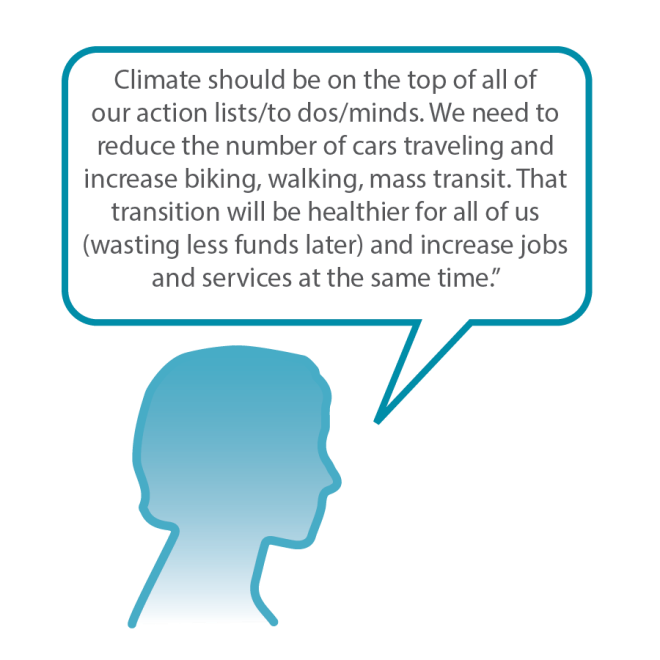
Many stressed the importance of improving pedestrian and bicycle safety to encourage more sustainable and active transportation, and reduce injuries for all users, especially youth, older adults, and people with disabilities.
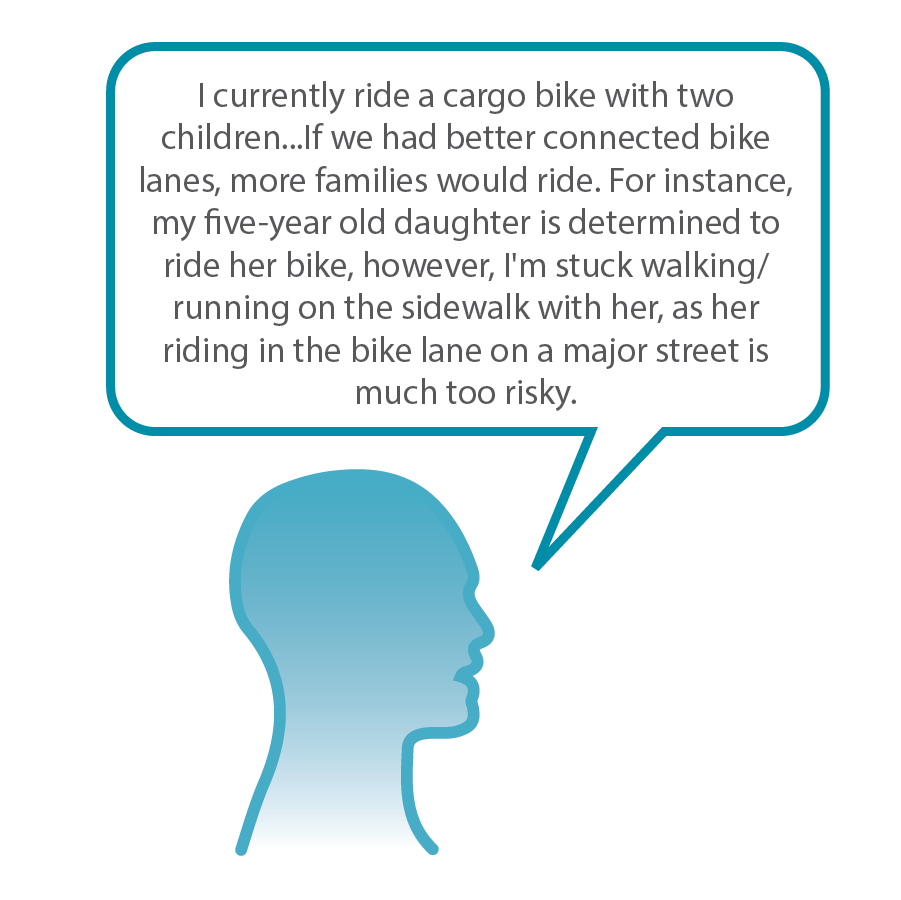
Respondents urged the MPO to prioritize investments in primarily low-income and minority communities that have been underserved and whose residents may be more reliant on transit.
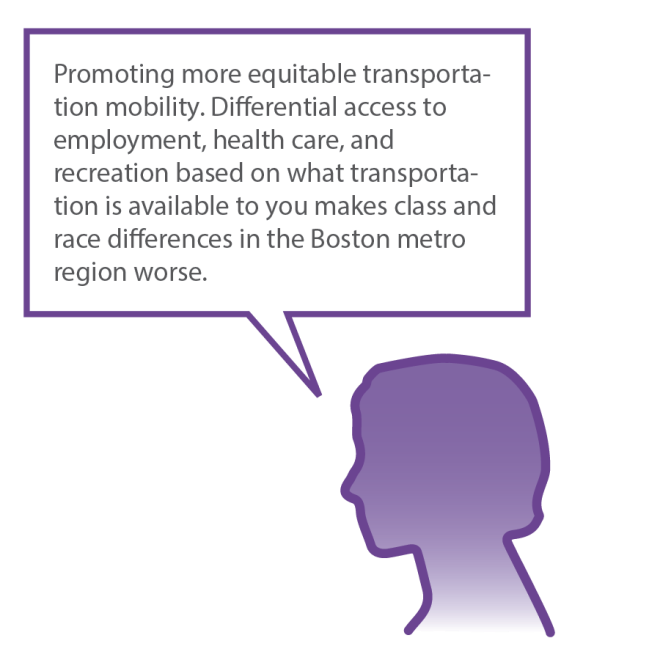
They also asked the MPO to heavily weight the negative impacts of projects and focus on reducing emissions in high-pollution areas to improve public health. While the connection between proximity to emissions and higher incidence of respiratory and cardiovascular disease has long been known, preliminary data on the impact of the current COVID-19 public health crisis in areas with higher emissions elevates the need to address this issue. This concern was already on MPO’s radar–the initial proposed changes to the transportation equity and clean air and sustainable communities criteria presented to the MPO board in January and March included adding metrics for assessing particulate matter (PM 2.5), more heavily weighting all emissions, and using a multiplier to provide more points to projects that benefit equity communities.
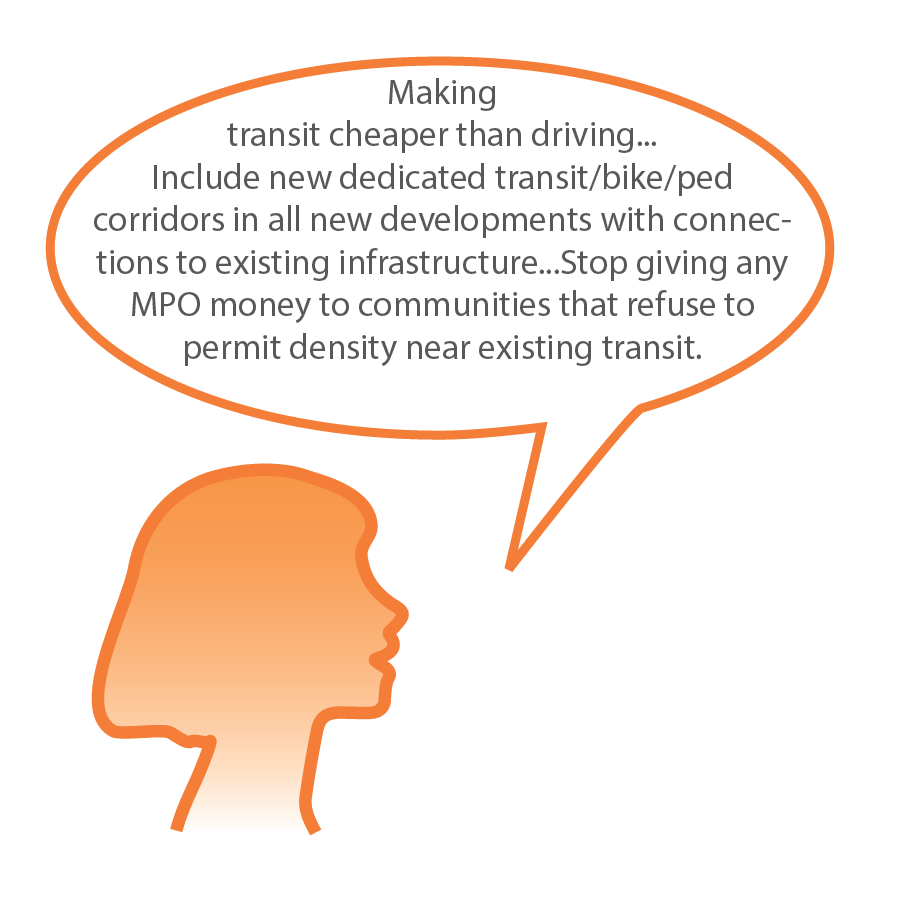
Respondents suggested strategies such as increasing urban tree canopy coverage and increasing bike and pedestrian connections to transit stations and mobility hubs. They asked the MPO to evaluate access to jobs and encourage smart growth, transit-oriented development, and transportation investments near affordable housing.
To learn more about what staff heard, read Public Engagement for the TIP Project Evaluation Criteria Revisions Memo.
What comes next?
The MPO board began to discuss proposed criteria changes for the transportation equity and clean air and sustainable communities goal areas in December 2019. At the meeting on June 25, 2020, MPO staff presented proposed criteria changes corresponding to the System Preservation goal area, as well as an overview of the public outreach process and feedback discussed in this blog. View the meeting recording including the TIP Criteria presentations on the MPO's YouTube channel. The next presentations by MPO staff relating to criteria revisions are expected to take place in July. To keep informed about upcoming presentations, visit the Creating New TIP Criteria page on the MPO website, subscribe to the mailing list, and follow @BostonRegionMPO on Twitter, Facebook, and Instagram.
Once the MPO has developed a complete list of proposed new criteria, staff plan to host virtual workshops with stakeholder groups, host an open house, and release an online survey to gather input. Due to the COVID-19 pandemic, staff plans to host all outreach virtually until at least September 2020. If you are interested in having MPO staff speak at your virtual meeting or event, contact Kate White, Public Outreach Coordinator, at kwhite@ctps.org.

